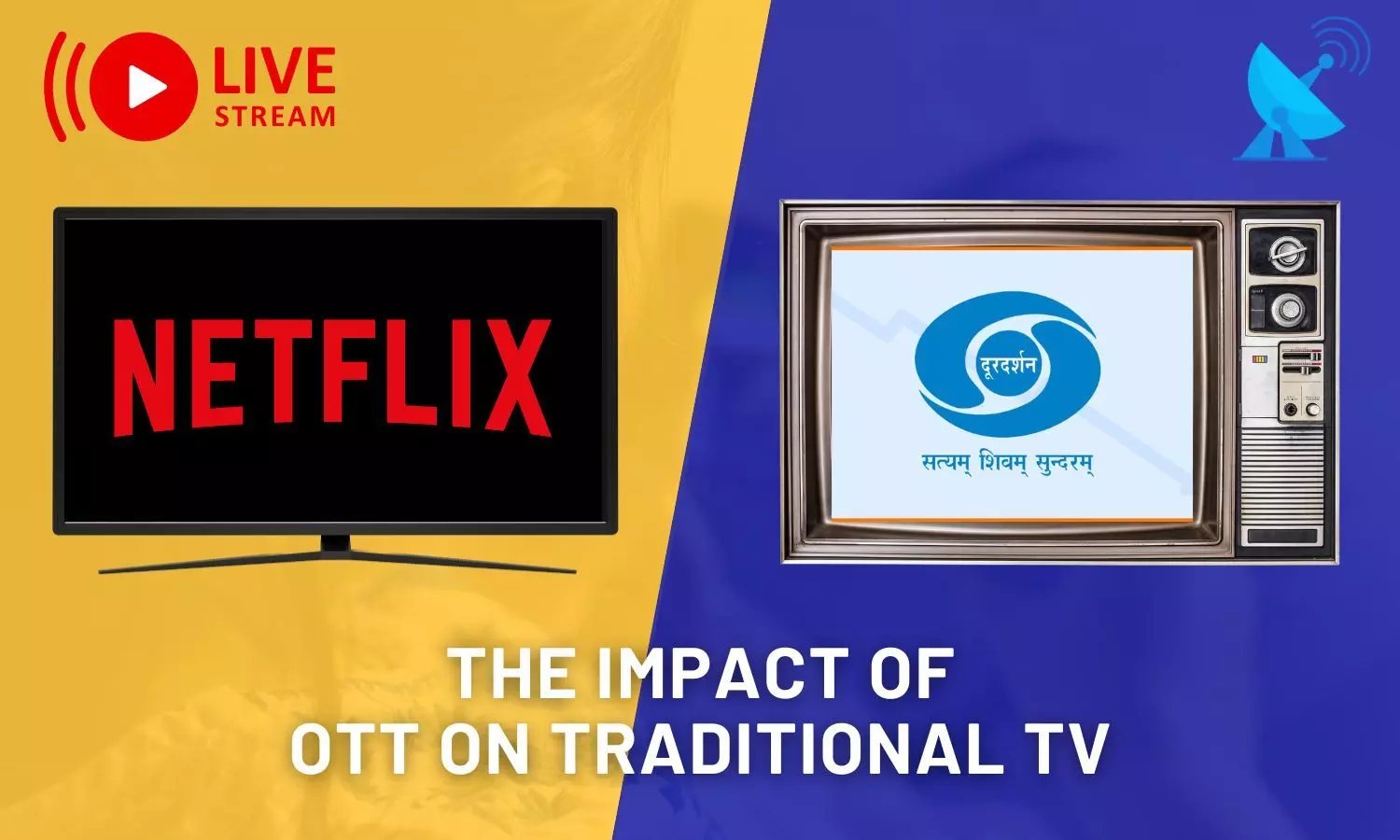Navigating the OTT Impact on Conventional Television
As OTT streaming rises to prominence in the entertainment world, it also opens the door for traditional TV to innovate and identify its own distinct edge.
Navigating the OTT Impact on Conventional Television

With the rising internet penetration, one crucial element of human existence that has undergone a remarkable transformation is entertainment. Gone are the days when consuming our favourite shows and movies required us to be tethered to our cable TV. Thanks to internet, now we can access a vast variety of content from anytime and anywhere.
In fact, going beyond the constraints of traditional TV, internet in conjunction with technological innovations has given rise to OTT platforms, which today have become central to on-demand entertainment. According to the Ormax OTT Audience Report 2024, India boasts nearly 547 million OTT users. This statistical figure is a testament to the raging popularity of video streaming platforms. Taking over the long-established hold of traditional viewing, OTTs have become a staple in every Indian household.
While OTTs have surely become an over-the-top solution for our entertainment needs, it has casted a significant impact on conventional cable TV, signaling an end of the traditional streaming.
OTT reigning supreme: Is it the end of cable TV era?
The rise of OTT streaming has notably impacted the viewing habits of individuals. From waiting for scheduled broadcasts to watching them at one's own convenience, OTT has offered much-needed convenience and flexibility to individuals. This has significantly resulted in a decline in the popularity of cable TV viewers.
In addition, content diversity is another remarkable benefit that earns OTT a point over traditional streaming. Cable TV comes with a limited number of channels and set showtimes. However, OTT platforms, on the other hand, boast a wide variety of content with no time restrictions, offering individuals more control over their watching experience.
While content variety has surely earned OTTs an edge over traditional streaming, it has also reshaped content production and distribution. Original content has become the USP of OTT. Original shows and movies are unique to each OTT platform, which drives their popularity. In light of this, industry players are largely moving towards original content production with the motive of attracting viewers and ditching traditional TV networks.
Future outlook: What is in it for TV?
While it is certainly true that OTT streaming will become a dominant force in the landscape of entertainment, it also presents an opportunity for traditional TV to adapt and discover its own unique selling point.
Cable providers should embrace streaming services to make their content greatly accessible to the public. 'Hybrid streaming services', which combine traditional TV channels with streaming options, are gaining ground. This trend presents a stellar opportunity for the TV industry to expand its reach to a broader and more diverse audience.
Moreover, akin to OTT platforms, cable TV providers should also focus on producing high-quality original content. By creating timeless shows, TV providers can build a loyal audience base willing to pay for exclusive access.
Modern streaming: Ushering in a new era of entertainment consumption
OTT streaming services have surely casted a substantial impact on cable TV, transforming the manner of entertainment consumption. However, this does not mark the end of the television. In fact, it presents an opportunity for cable providers to embrace hybrid streaming and focus on producing unparalleled content in order to get back in the game.
As the world continues to get more digitalized, it will be intriguing to witness how traditional TV and modern streaming services will co-evolve and influence the entertainment scenario.

